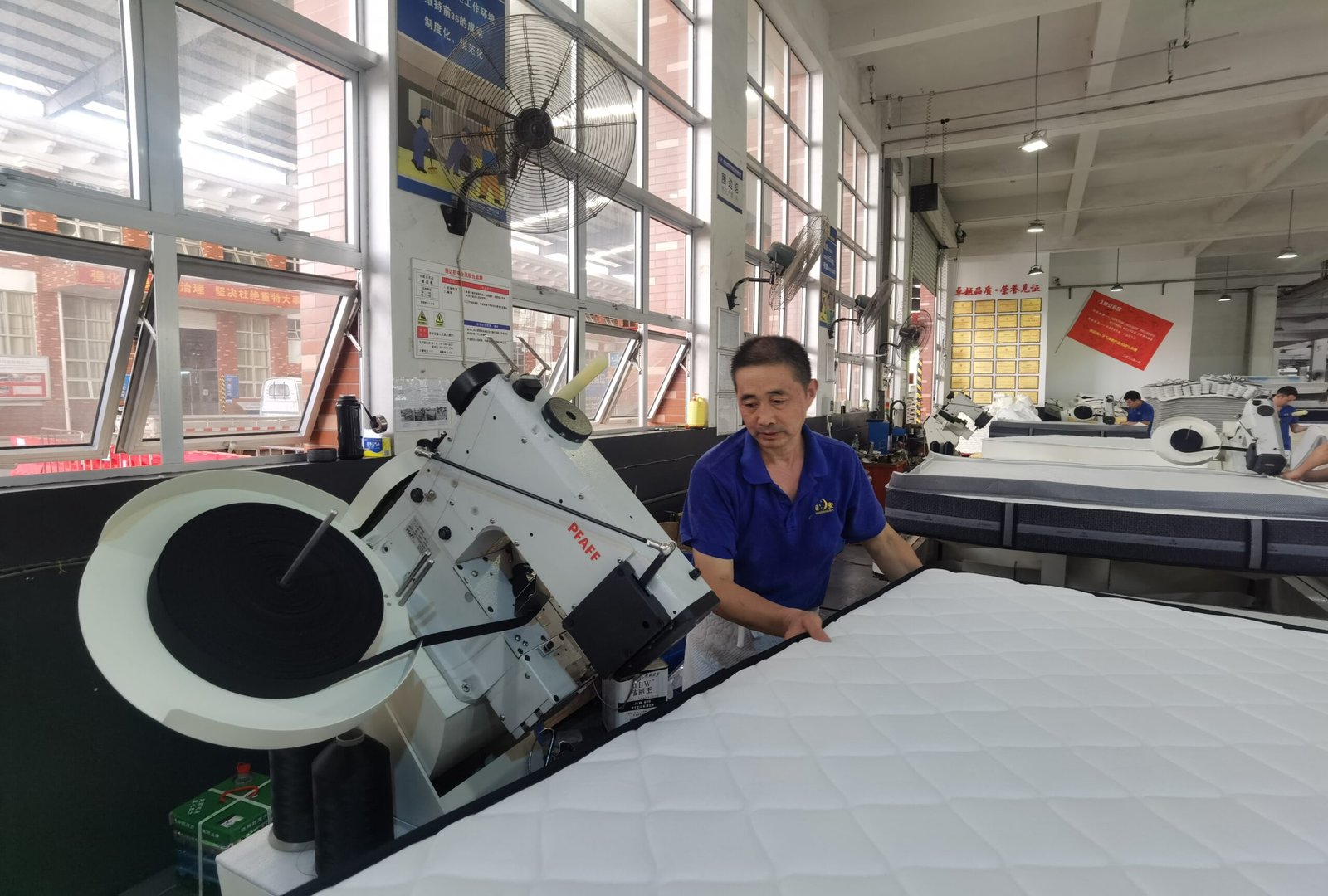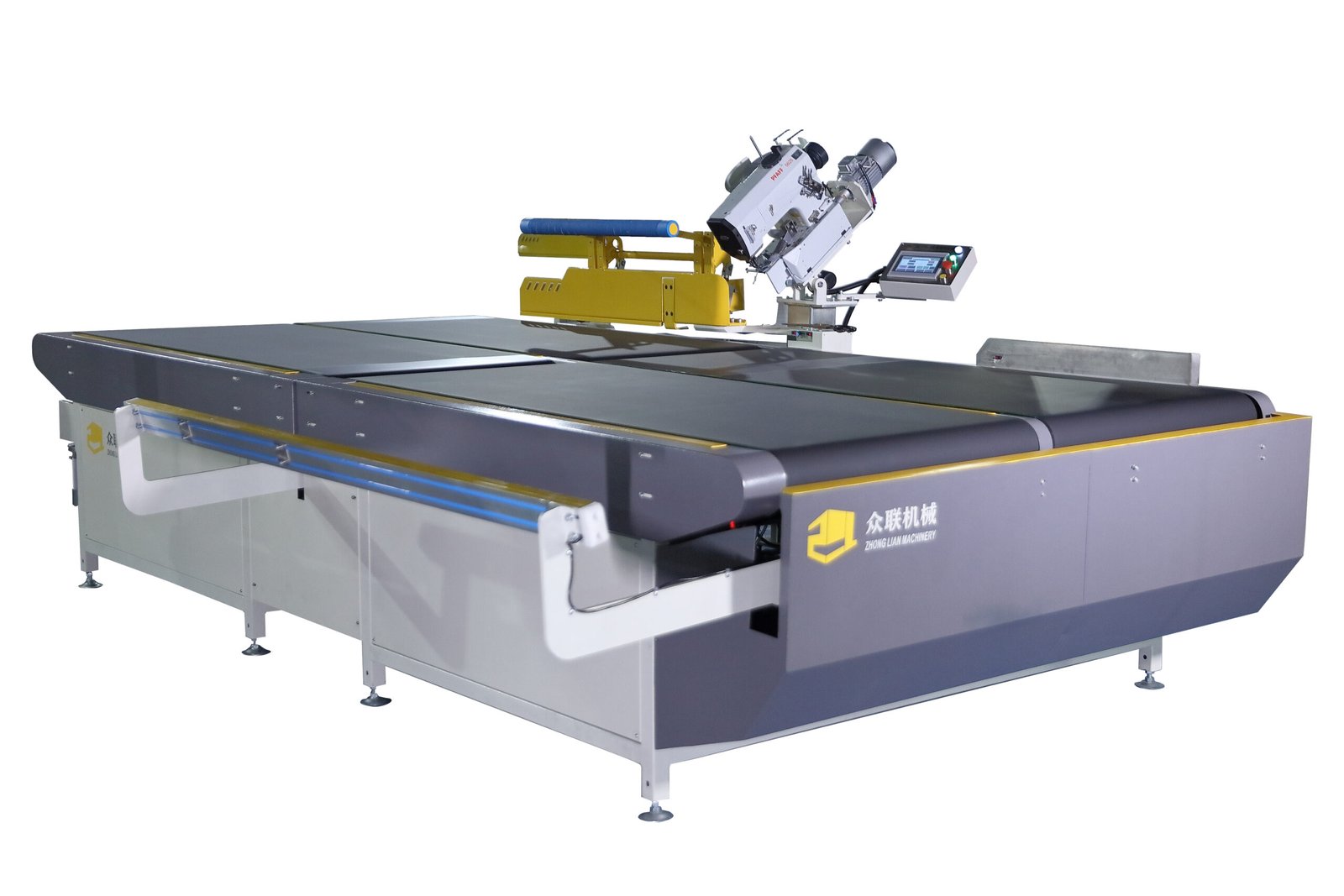Buying the wrong sewing machine can slow your whole line, increase rework, and damage your brand.
Industrial mattress sewing machines are essential for building durable, high-quality mattresses at scale, with speed, precision, and consistency.

In this article, I’ll share how these machines work, why they matter, and how to choose and maintain the right ones for your production line.
What Are Industrial Mattress Sewing Machines Exactly?
Without the right machine, your stitching will be weak, uneven, or slow to produce.
These are heavy-duty machines designed to sew multiple mattress layers—handling thick fabrics, foams, and edge materials with consistent quality.

What Makes These Machines Different?
Heavy-Duty Construction
They use cast iron frames, reinforced drives, and high-torque motors to run non-stop in tough environments.
Designed for Volume
Standard sewing machines can’t handle 200mm thick quilting. These machines can—while running at 2,000+ stitches per minute.
Compatible With Mattresses
They are built for quilting panels, sewing tape edges, adding labels, and closing thick borders—all in one system or as modular lines.
| Feature | Why It Matters |
|---|---|
| Large clearance under presser | Fits thick mattress layers |
| Powerful needle penetration | Works with denim, felt, PU foam |
| Programmable stitch patterns | Supports branded designs and quality |
What Types of Machines Should You Know About?
Using the wrong type will waste time—or worse—fail during busy seasons.
There are three major types of industrial mattress sewing machines, each for different steps in production.

1. Chain Stitch Machines
Used for flexible seams like handles or border panels. Strong, elastic stitch.
- Can handle curved panels
- Good for decorative border designs
2. Lock Stitch Machines
Used for strong, tight seams like panels, corners, and label stitching.
- Offers tighter seam control
- Best for straight-line stability
3. Multi-Needle Quilting Machines
Sew the top and bottom panels with 2–6 needles at once. Ideal for visual designs.
- Can quilt heavy or soft layers
- Works with digital pattern input
| Machine Type | Best Use Case |
|---|---|
| Chain Stitch | Border and tape handles |
| Lock Stitch | Panel joints, labels, tight edges |
| Multi-Needle Quilter | Patterned quilting or foam + fabric |
Factories often combine 2–3 types in a full line setup.
What Features Should You Look For?
There are hundreds of models—focus on features that give you control and flexibility.
Prioritize speed, automation, durability, and ease of maintenance.
Must-Have Features
🧵 Programmable Stitch Settings
Save common stitch types, edge patterns, or SKU presets—switch jobs with one button.
⚙️ Servo Motor Drive
Quieter, more efficient, and better torque control compared to clutch motors.
📏 Adjustable Stitch Length & Pressure
Lets you adapt from light fabric to 300mm high spring packs.
🔧 Tool-Free Maintenance Points
Daily maintenance shouldn’t require tools or downtime.
| Feature | Benefit |
|---|---|
| Stitch memory programming | Switch designs fast |
| Quick-change needle plates | Speed up maintenance |
| Emergency stop sensors | Safe for less-experienced operators |
Optional add-ons: auto thread cutter, fabric feeding arm, or remote diagnostics module.
What Are the Real Benefits in Production?
Beyond technical specs—what do you actually gain?
Industrial mattress sewing machines reduce rework, increase daily capacity, and maintain stitching consistency across all units.
Core Benefits
- 💡 Increased Output: Machines run faster and longer without quality loss.
- 🔁 Repeatable Stitch Quality: No gaps, skipped stitches, or frayed edges.
- 💰 Labor Savings: 1 trained operator can run multiple machines with automation.
- 📦 Fewer Defects: Lower return rates due to consistent panel quality.
Real Factory Example
| Metric | Before (Manual + Old Machines) | After (2 Auto Machines) |
|---|---|---|
| Daily Output | 80–100 mattresses | 200+ mattresses |
| Operator Count | 4 | 2 |
| Defect Rate | 6–8% | <1.5% |
| Setup Time (per SKU) | 20 min | 5 min |
ROI achieved within 14 months, with minimal machine downtime.
How Do You Maintain These Machines Properly?
A good machine can still break if you don’t maintain it.
Follow a clear daily, weekly, and monthly maintenance plan to prevent wear and avoid production delays.

Simple Routine Checklist
| Task | Frequency |
|---|---|
| Clean lint and dust | Daily |
| Oil gears and moving parts | 2x per week |
| Check needle & tensioner | Weekly |
| Replace belts or cams | Monthly / as needed |
Tips for Longevity
- Use only recommended oil or grease
- Train staff to spot early issues (noise, vibration)
- Schedule professional service every 6–12 months
Should You Train Your Team?
Yes—because even great machines perform poorly if misused.
Your operators must understand how to set up, monitor, and troubleshoot their machines confidently.
Training Content to Cover
- Setting needle and bobbin tension
- Recognizing stitch defects
- Using stitch memory and pattern selection
- Daily inspection points
Factory teams with trained operators show 30–40% fewer service calls and lower scrap rates.
Conclusion
Industrial mattress sewing machines are not just a tool—they are the heart of your production line. The right machines, paired with the right training and maintenance, ensure your factory delivers consistent, high-quality mattresses at scale.
Get in touch with us for tailored solutions! We look forward to collaborating with you and shaping a brighter future together!
📞 | WhatsApp:+86 15220512074
📧E-mail:zhongliantec@gmail.com
Web | Link:mattressmachineryzl.com
